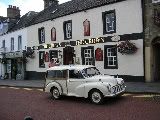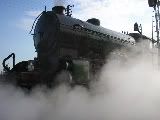Postby Workshop Help » 07 Jul 2010 00:51
Let's start with the most obvious questions. Is coolant being pumped from the block and out thru the upper radiator hose? When the engine is at it's operating temperature with the thermostat opened, is there a spongy resistance when you squeeze the upper hose? Is there coolant in the lower hose when you squeeze it? What is the temperature rating of your thermostat? The common wisdom is to use one rated at 180 degrees F. Are you using a cooling system lubricant? Now is a good time to do so. I do hope your coolant mix is 50/50 distilled water and antifreeze.
As for the initial fill procedure, on the early cars with the plug in the top of the thermostat housing, one fills it cold here, then runs the engine up to operating temperature. Once it has cooled down again, fill it up to the top and refit the plug. On the later cars without the plug, one can, I say CAN, remove the thermostat housing and fill the system thru the thermostat cavity, then later after running up the temperature, complete the fill thru the overflow tank. Others say just fill up the overflow tank and later check for additional coolant needs. Which ever method you prefer, the key question is; did all the air burp it's way out of the cooling system?
As for the heater core not receiving hot coolant, it gets it from the rear transfer housing on the back of the head. Provided the heater core is not plugged with debris or mounds of sand from old cooling system sealant, perhaps testing the core by disconnecting the hoses and flushing it with fresh water from the garden hose is worth a try. If water does not flush from the outlet spigot, you will have found your next problem. If water does flush, an air pocket may need to be burped.
Please report your progress so others may chime in with their suggestions and nightmare stories.
Mildred Hargis

















